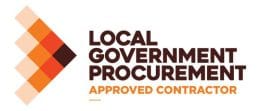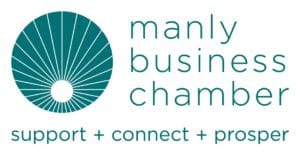Consultation Obligations in labour hire arrangements
By Ethan Brawn and Samantha Gaupset – Holman Webb Lawyers
Introduction
A principal to a labour hire arrangement has recently been fined for breaches of section 46 of the Work Health and Safety Act (the WHS Act) for failing to consult after a worker sustained injuries in a quad bike accident. The decision of Russell DCJ SafeWork NSW v Integrated Agricultural Developments Pty Ltd [2024] NSWDC 243 highlights the importance for employers to work closely with all duty holders in a labour hire arrangement to ensure there are effective, safe work practices for workers to follow to respond and eliminate workplace risks[1].
Duty to consult
All duty holders in a labour hire arrangement “must, so far as is reasonably practicable, consult, co-operate and co-ordinate activities with all other persons who have a duty in relation to the same matter.”[2] In a typical scenario, the duty holders include the labour hire provider and the host employer. On large projects, the duty holders could consist of various trades/contractors undertaking work. Duty holders should not assume that another party is taking care of a health and safety matter. Instead, they should work together to share information and coordinate to ensure the safety of workers and compliance with WHS laws. The maximum penalty for an offence of section 46 of the WHS Act is a fine of $117,810.
Recent decision
Integrated Agricultural Developments Pty Ltd (IAD) operates vineyards. It engaged a labour hire provider, LJ Priest, to place workers at one of its sites. During his duties at IAD, the worker coordinated a controlled hazard reduction backburn. To monitor the backburning, the worker rode a quad bike onto the wall of an irrigation dam. The worker was injured after the quad bike tipped over, striking and trapping him.
IAD pleaded guilty to an offence under section 46 of the WHS Act. The charges came about due to a lack of consultation with the labour hire provider about the workers being lent on hire. The court found that there was a failure to:
- “Make enquiries with LJ Priest to gain information about the training and experience of its workers in the use of quad bikes, in particular:
- What, if any, licenses and competencies the workers had in the use of quad bikes;
- What, if any, experience did the workers have in the safe use of quad bikes;”
- Communicate “to LJ Priest a requirement for quad bikes to be used by workers to be placed with the Defendant for work at the Site.”
- Communicate “with LJ Priest to confirm that there was a safe system of work in place for using quad bikes at the Site.”[3]
The District Court held that the lack of consultation created a risk to the worker of “suffering death or serious injury as a result of operating a quad bike at the site, without wearing a suitable helmet, and where the quad bike did not have an operator protective device fitted.”[4] The District Court initially fined IAD $20,000. However, the fine was reduced by 25% to $15,000 due to recognition of the guilty plea.
Key takeaways for employers
Problems can arise on sites with multiple duty holders when communication breaks down (or is non-existent), and people make assumptions over what work is to be performed, who is to perform it, who will conduct induction and training, and who will be responsible for implementing the safety system on site.
Safe Work Australia has published a guide to assist duty holders in understanding their consultation obligations. The guide identifies some of the key areas that labour hire and host employers should consider to ensure the safety of workers.[5] All duty holders must remember to work closely with each other to ensure all parties are well versed in safe work methods and processes. Compliance with the WHS Act also requires workers to be engaged in discussions about health and safety measures. Duty holders should have clear communication channels for sharing further information on eliminating or responding to workplace risks and updating workers on new hazards.
It is important for both host employers and labour hire providers to:
- Work in consultation to ensure they are clear on their responsibilities regarding dealing with WHS matters.
- Work in consultation to manage any changes that may impact WHS.
- Verify, in consultation with each other, that workers have the required qualifications, licences, skills, and training to carry out the work safely.
- Developing, in consultation with each other, a review process, such as workplace safety assessments, to maintain workers’ WHS.
- Confirm, in consultation with each other, that induction training specific to the location and tasks that workers can easily understand is provided and that the necessary personal protective equipment is provided.
- Work in consultation to ensure both duty holders are notified of any incidents and that agreed arrangements are implemented.
It is important for host employers to:
- Provide labour hire providers with comprehensive details about the work to be performed.
- Provide workers with a safety induction tailored to the site.
- Provide continuous and consistent supervision for workers.
- Promote ongoing communication between workers and the labour hire providers.
It is also important for labour hire providers to:
- Examine the host employer’s workplace health and safety record to ensure they provide a safe work environment. Labour hire providers should also undertake site inspections before sending out staff and review the host’s established WHS systems and processes.
- Ensure that they have a precise understanding of the work that will be performed by their employees and ensure the suitability of employees for the work
- Set up clear communication channels that allow workers to report risks easily and ensure timely and effective action. Workers should be instructed to contact them if the host employer allocates tasks to them outside the agreed scope of duties and not to undertake any duties outside the scope of their agreed assignment.
- Regularly visit the site to keep in touch with employees and to monitor and update risk assessments to identify new health and safety risks.
In summary, duty holders must consistently work in consultation with all other duty holders, such as labour hire providers, to ensure that safe systems of work not only exist but the requirement to abide by them is also being enforced. Duty holders should take all reasonably practicable measures to limit the risk of workplace incidents. Measures to consider at worksites can include enhancing induction processes, establishing supervision arrangements, implementing compulsory safe work procedures that must be signed off, and conducting toolbox talks to reinforce requirements of safety measures. Implementing regular and consistent communication between duty holders will go a long way to ensure compliance with the consultation obligations under the WHS Act.
If you have any questions about this article and or the WHS Act, please contact Ethan Brawn or Robin Young from Holman Webb’s Workplace Relations team.
[1] https://www.caselaw.nsw.gov.au/decision/1905277bf36149e510fab18e
[2] https://www.caselaw.nsw.gov.au/decision/1905277bf36149e510fab18e [6]
[3] https://www.caselaw.nsw.gov.au/decision/1905277bf36149e510fab18e [10]
[4] https://www.caselaw.nsw.gov.au/decision/1905277bf36149e510fab18e [8]
[5]https://www.safeworkaustralia.gov.au/system/files/documents/1908/labour-hire-duties-of-persons-conducting-business-undertaking.pdf










